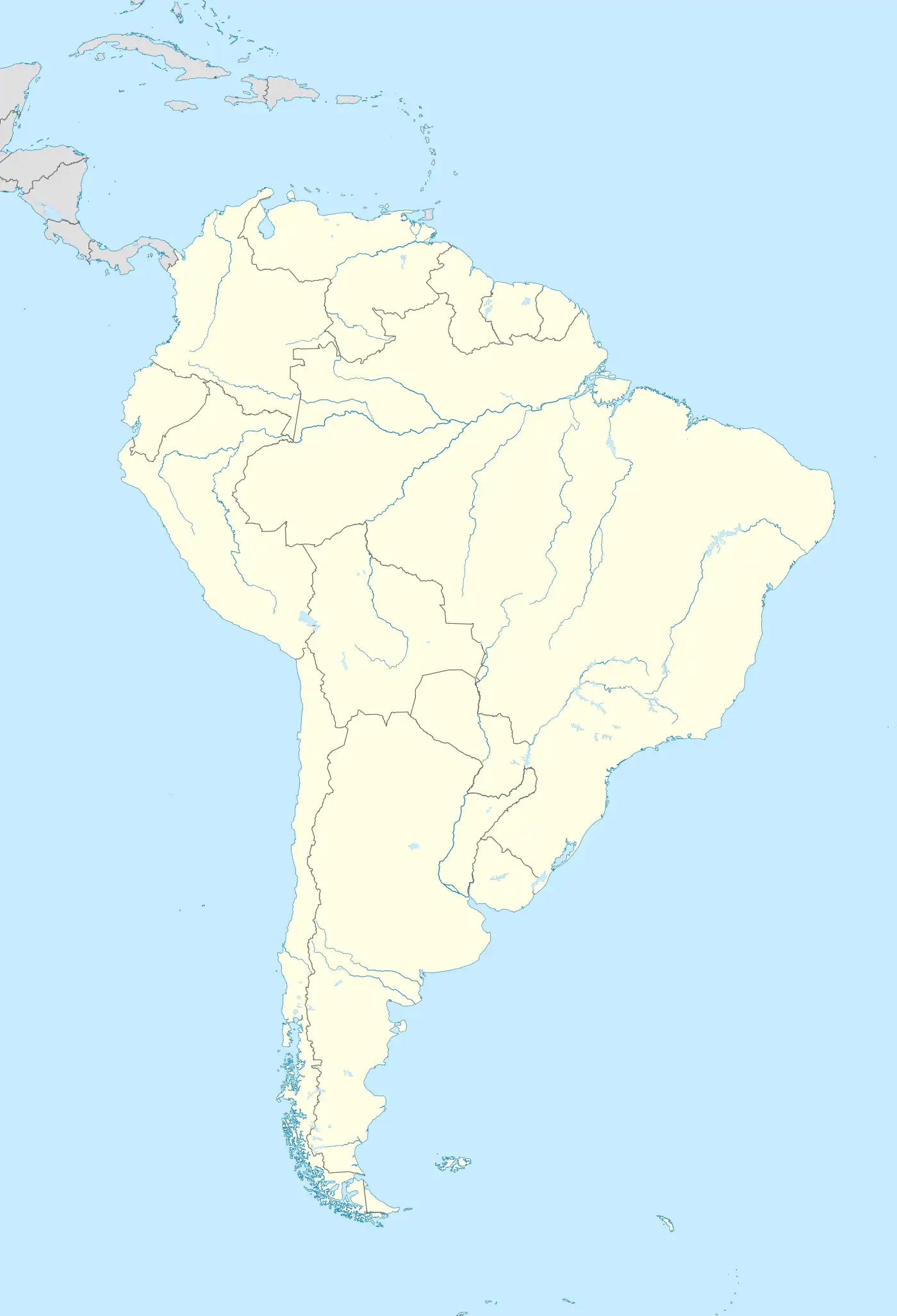Mexico City International Airport Aeropuerto Internacional de la Ciudad de México | |||||||||||||||
|---|---|---|---|---|---|---|---|---|---|---|---|---|---|---|---|
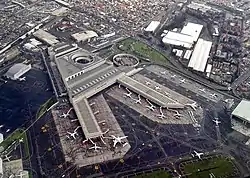 | |||||||||||||||
| Summary | |||||||||||||||
| Airport type | Public | ||||||||||||||
| Owner | Mexican Navy | ||||||||||||||
| Operator | Grupo Aeroportuario de la Ciudad de México | ||||||||||||||
| Serves | Greater Mexico City | ||||||||||||||
| Location | Venustiano Carranza, Mexico City | ||||||||||||||
| Opened | May 15, 1931 | ||||||||||||||
| Hub for | Passenger Cargo | ||||||||||||||
| Focus city for | Magnicharters | ||||||||||||||
| Time zone | CST (UTC−06:00) | ||||||||||||||
| Elevation AMSL | 2,230 m / 7,316 ft | ||||||||||||||
| Coordinates | 19°26′10″N 099°04′19″W / 19.43611°N 99.07194°W | ||||||||||||||
| Website | aicm.com.mx | ||||||||||||||
| Map | |||||||||||||||
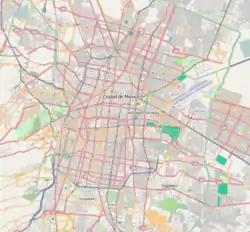 MEX Location within Mexico City 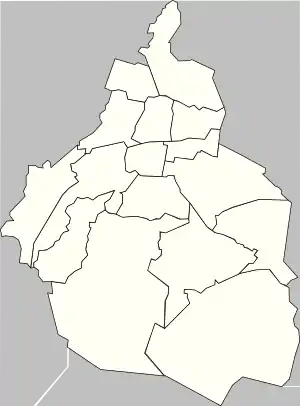 MEX MEX (Mexico City) 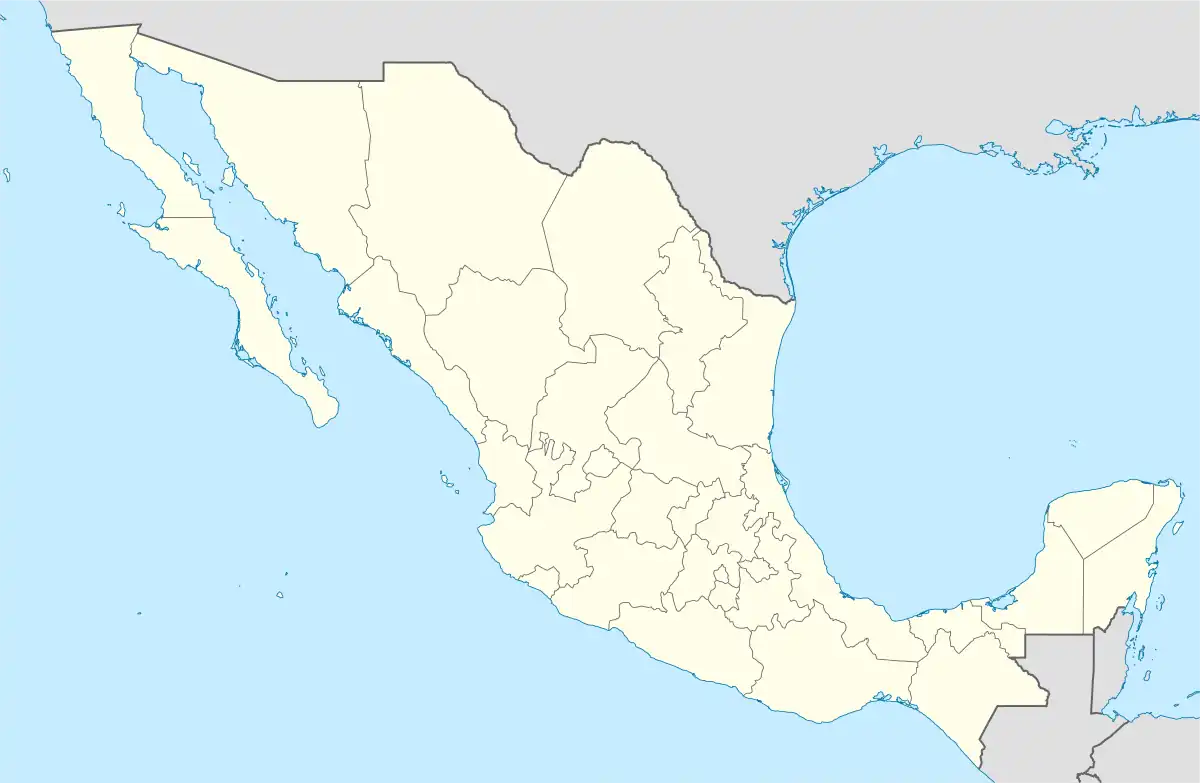 MEX MEX (Mexico) | |||||||||||||||
| Runways | |||||||||||||||
| |||||||||||||||
| Statistics (2022) | |||||||||||||||
| |||||||||||||||
Mexico City International Airport (Spanish: Aeropuerto Internacional de la Ciudad de México, AICM); officially Aeropuerto Internacional Benito Juárez (Benito Juárez International Airport) (IATA: MEX, ICAO: MMMX) is the primary international airport serving Greater Mexico City. It is the busiest airport in Mexico and Latin America,[4] ranking as 17th-busiest in the world and eighth in North America as of 2022,[5] based on passenger traffic and aircraft movements.
The airport is served by more than 30 airlines, facilitating flights to over 100 destinations across Mexico, the Americas, Europe, and Asia. With more than 136,000 passengers daily, the airport handled 36,056,614 passengers in 2021 and 46,200,529 in 2022.[3]
As the primary hub for Mexico's flag carrier, Aeroméxico, Mexico City Airport functions as a SkyTeam hub. Additionally, it serves as a hub for Volaris and Viva Aerobus, and a focus city for Magnicharters. The facility comprises two passenger terminals and two runways. It supports cargo activities and accommodates entities such as Mexican Airspace Navigation Services, the Federal Civil Aviation Agency, and an Air Force Base. It is owned by the Mexican Navy and operated by Grupo Aeroportuario de la Ciudad de Mexico. It was named after the 19th-century president Benito Juárez.[6]
Part of Mexico City's airport system, which also includes Toluca International Airport (TLC) and Felipe Ángeles International Airport (NLU), the Mexico City International Airport is currently operating at full capacity.[7] With an average of 1056 daily aircraft movements, it ranks as the busiest two-runway airport in the world.[8]
History
Origins
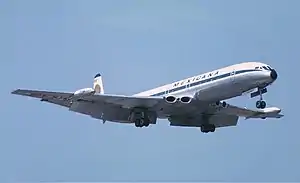
The original site, known as Llanos de Balbuena, had been utilized for aeronautical activities since 1910, marking a significant milestone when Alberto Braniff became the first person to fly an airplane in Mexico and Latin America.[9][10] This historic flight took place on board a Voisin biplane. On November 30, 1911, President Francisco I. Madero achieved another aviation first by being the world's inaugural head of state to fly on an airplane, piloted by Geo M. Dyott of Moisant International.[11]
In 1915, the site opened as Balbuena Military Airport, equipped with five runways.[12] The construction of a small civilian airport commenced in 1928. The first landing occurred on November 5, 1928, regular services began in 1929, and the official inauguration took place on May 15, 1931. On July 8, 1943, it gained international status, launching its initial international route to Los Angeles International Airport operated by Mexicana de Aviación.
From 1949 to 1951, the airport underwent an expansion that involved the construction of a new Runway 05R-23L, apron, control tower, and administration offices. President Miguel Alemán inaugurated a renovated passenger terminal on November 19, 1952.[13] By 1956, the airport operated with four runways: 05L-23R (2,720 metres (8,920 ft)), 05R-23L (3,000 metres (9,800 ft)), featuring electric lights for night-time service; 13-31 (2,300 metres (7,500 ft)), constructed to relieve the runway 14-32, which was too close to adjacent residential areas; and Runway 5 Auxiliary (759 metres (2,490 ft)).[14]
On December 2, 1963, the airport's name changed from "Aeropuerto Central" (Central Airport) to "Aeropuerto Internacional de la Ciudad de México" (Mexico City International Airport).[15] In the 1970s, the two shortest runways (13/31 and 5 Auxiliary) were closed to facilitate the construction of a social housing complex in that area, named Unidad Fiviport.[16][17][18] This initiative resulted in the airport's current configuration with two parallel runways. On November 24, 1978, the Mexico City Area Control Center commenced its operations and has been in continuous service since then.[15][19]
Expansion and decentralization
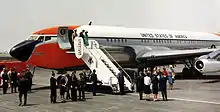
The airport, constrained by its location in a densely populated area, faced limitations in infrastructure expansion due to urban constraints, limited runway space, and congestion during peak hours. The proximity of the two parallel runways restricts fully simultaneous operations, contributing significantly to the constraint. The terminal underwent expansion on multiple occasions: in 1980, doubling its capacity with a single large layout, and in 1990, separating domestic and international facilities for increased functionality. Renovations continued, and on April 11, 1994, a new International section became operational through a joint venture between Aeropuertos y Servicios Auxiliares ASA and a private contractor.
Mexicana, a key player in the country's aviation industry, initiated a decentralization effort to alleviate congestion at the airport. This effort involved relocating numerous flights to airports in Guadalajara, Monterrey, and Mérida. In 1994, general aviation was moved to Toluca International Airport.[20] Since then, only government, military, commercial, and specially authorized aircraft are allowed at the airport. In 2001, the passenger terminal expanded with the construction of a satellite building east of the terminal featuring eight gates.[21]
Congestion challenges
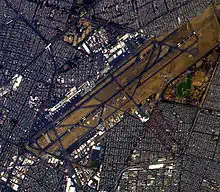
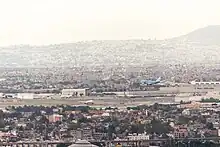
The congestion challenges at Mexico City Airport became a prominent issue in Mexican politics in the early 2000s. Large infrastructure projects, particularly in transportation, have historically played a crucial role in presidential legacies due to centralized decision-making, their symbolic significance for progress, and leaders' aspirations to leave a lasting impact.
In 2002, President Vicente Fox´s administration introduced an ambitious plan for a new expansive airport covering 5,000 hectares (12,000 acres) in the municipalities of Atenco and Texcoco. However, the Atenco project faced substantial opposition and controversy, especially from the Community Front in Defense of Land (Frente del Pueblo en Defensa de La Tierra, FPDT), representing locals facing displacement. Protests escalated into violent clashes, resulting in the cancellation of the new airport.[22]
In response, the federal government in 2003 announced an extension to the existing terminal, expanding its service capacity from 20 million to 32 million passengers annually. The expansion covered 90,000 square metres (970,000 sq ft), with 48,000 square metres (520,000 sq ft) as new construction and 42,000 square metres (450,000 sq ft) as renovated areas. Renovations included new check-in areas, commercial spaces, a new departures concourse, and the construction of a long-distance bus terminal. The bus station provided access to a food court, the international arrivals and departures area, and a pedestrian bridge connecting to "The Peñón de los Baños" neighborhood.
Throughout the 2000s and 2010s, political initiatives aimed at establishing nearby airports such as Puebla, Toluca, Cuernavaca, and Querétaro as supplementary options for serving the Mexico City Area were introduced. This initiative, known as the Metropolitan Airport System, was promoted by the Federal Administration.
On November 15, 2007, Terminal 2 was inaugurated, significantly increasing the airport's capacity. All SkyTeam members, except Air France and KLM, relocated their operations to the new terminal. Officially opened in March 2008, Terminal 2 expanded the gates number by 40% and operational capacity by 15%. The inauguration ceremony was led by President Felipe Calderón.[23]
Replacement controversy
In 2014, Mexican authorities declared the airspace around Mexico City Airport saturated, setting a maximum capacity of 61 operations per hour from 7:00 to 23:59.[24] President Peña Nieto´s administration reignited major airport infrastructure plans in the same year, introducing the Texcoco Airport project.[25][26][27] Positioned as Mexico's most significant public infrastructure project in a century, it aimed to replace the ageing Mexico City International Airport by 2023, featuring a state-of-the-art terminal of 560,000 square metres (6,000,000 sq ft) and six runways.[28][29][30] However, President López Obrador, then a candidate, campaigned against Texcoco Airport, leading to a divisive political discourse.[31]

Upon assuming the presidency, López Obrador´s administration initiated a controversial referendum to gauge public opinion on completing Texcoco Airport or proceeding with the Santa Lucía expansion.[32] Despite facing criticism for lacking official validity and result interpretation challenges, López Obrador's administration pursued the Santa Lucía expansion, resulting in Felipe Ángeles International Airport, officially opened in 2022. Positioned as the secondary airport of Mexico City, it has been slow to gain prominence.
On July 23, 2020, an extension of Terminal 2, named Pier L, was inaugurated, adding 7 gates to reduce the use of buses. However, in 2022, a declaration of airport saturation was issued from 5:00 to 23:59 for Terminal 1 and from 6:00 to 23:00 for Terminal 2, maintaining the 61 operations/hour limit.[33] In 2023, the Mexican government attempted to decongest the airport by announcing the relocation of all cargo aircraft landing at Mexico City to Felipe Ángeles Airport to "protect the safety of the operations."[34] This forced relocation led to logistical challenges, increased inefficiencies, safety concerns, and a lack of storage facilities at Felipe Ángeles Airport.[35]
Facilities
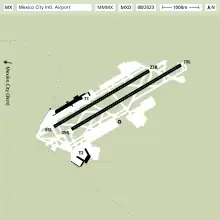
The airport is located in the neighborhood of Peñón de los Baños within Venustiano Carranza, one of the sixteen boroughs of Mexico City, situated 5 kilometres (3.1 mi) east of Downtown Mexico City. Surrounded by the built-up areas of Gustavo A. Madero borough to the north and Venustiano Carranza borough to the west, south, and east, the airport's runways, running southwest–northeast, contribute to overflying problems and noise pollution over Mexico City during landings with a northeast wind.[36][37]
Considered a Hot and dry airport at an elevation 2,230 metres (7,320 ft) above sea level, it spans 747 hectares (1,850 acres), featuring two parallel runways, less than 300 metres (980 ft) apart, hindering simultaneous operations. Runway 05L/23R is 3,900 metres (12,800 ft) long, and runway 05R/23L is 3,950 metres (12,960 ft) long. North of the airfield houses Terminal 1, cargo facilities, maintenance hangars, and administration buildings. On its northern edge, Aeropuertos y Servicios Auxiliares ASA, a government-owned corporation, has its headquarters.[38][39] South of the airfield, there is Terminal 2, maintenance hangars, police and Mexican Airspace Navigation Services facilities, and a military complex.
Air Force Base No. 19 (Spanish: Base Aérea Militar No. 19 Ciudad de México) (B.A.M. 19) is located on the airport grounds, adjacent to Terminal 2. It serves as the home for the High Command Special Air Transport Unit (UETAAM) managing a diverse fleet of aircraft that includes the Boeing 737, IAI 201, JetStar, King Air, SA 330J, and UH-60 Black Hawk. It also hosts the General Coordination of the Presidential Air Transport Unit. BAM-1 features an apron and several hangars, one of which is called the Presidential Hangar, used for receiving state visits and presidential travels.[40] In addition to these, it includes administrative buildings and various other facilities for accommodating Air Force personnel.[41]
Mexico City Area Control Center (ACC) is one of four Area Control Centres in Mexico, with the others being the Mazatlán ACC, Monterrey ACC, and Mérida ACC. It operates under the Mexican Airspace Navigation Services, (Spanish: Servicios a la Navegación en el Espacio Aéreo Mexicano). Mexico ACC provides air traffic control services to aircraft within the Mexico Flight Data Region (FDRG). This region includes the central portion of Mexico. It shares its boundaries with six other Area Control Centers. To the north, it is adjacent to the Monterrey ACC, while to the east, it borders the Merida ACC. To the west, it borders the Mazatlán ACC, and to the south, it borders the Mazatlán Oceanic (MMFO).
The airport features 95 hardstands for aircraft, with 63 connected via Jetbridges to the terminals (33 in Terminal 1 and 30 in Terminal 2) and 32 remote stands. With an average of 1,056 daily operations, it holds the highest number for any two-runway airport globally.
Terminals
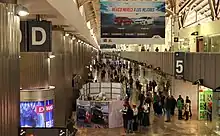
Terminal 1
Terminal 1, operational since 1958, has undergone several expansions, with significant upgrades in 1970, 1989, 1998, 2000, and 2004, resulting in a total surface area of 542,000 square metres (5,830,000 sq ft). The structure is an 800 metres (2,600 ft) long, two-story building, with international services located in the eastern section and domestic services in the west. The ground floor accommodates all arrival facilities, featuring 22 baggage claim carousels, domestic check-in areas for Volaris, Viva Aerobus, and Magnicharters (A1, A2, B, C, D, D1), as well as a commercial corridor along the street hosting snack kiosks, banks, souvenir shops and car rental services. The top floor comprises international check-in areas (F1, F2, F3), food courts, restaurants, multiple security checkpoints, and a 900 metres (3,000 ft) long departures concourse (gates 1 to 28) connected via a walkway to a satellite building (gates 29-36).
Gates 1 to 18 serve domestic flights, while gates 19 to 36 cater to international flights. Thirty-three gates are equipped with jetbridges, and an additional 17 remote positions can be reached by bus. The terminal also houses a 110-room Hilton hotel and administrative offices, with parking available for 5,500 vehicles.
Terminal 1 features various VIP lounges, including the Admirals Club by American Airlines, Elite Lounge by MasterCard, Salón Centurión by American Express, Salón Beyond by Citibanamex, Televisa Vip Lounge, Terraza Elite, The Grand Lounge Elite, The Grand Lounge Elite 19, The Lounge by Global Network, United Club by United Airlines, and VIPort Lounge.
The primary tenants at the terminal are Volaris and Viva Aerobus, which operate their hub at this location. Other airlines serving Terminal 1 include Air Canada, Air France, All Nippon Airways, American Airlines, Avianca, Avianca Costa Rica, Avianca El Salvador, British Airways, Emirates, Iberia, KLM, Lufthansa, Magnicharters, Turkish Airlines, United Airlines, Volaris Costa Rica, and Volaris El Salvador.
In the vicinity of the terminal, a variety of hotels are available, including Camino Real Aeropuerto México, City Express Aeropuerto Ciudad de México, Courtyard Mexico City Airport, Fiesta Inn Aeropuerto México, Fiesta Inn Plaza Central Aeropuerto, Hilton Aeropuerto México, Holiday Inn México Dalí Aeropuerto, Hotel Grand Prix, Hotel Riazor, NH Aeropuerto T2 México, izZzleep Hotel, Krystal Urban Aeropuerto, and We Hotel Aeropuerto.
Terminal 2
_-_phone_08.jpg.webp)
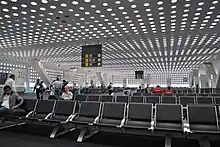
Operations at Terminal 2 commenced on November 15, 2007, with inaugural flights by Delta Air Lines, followed by Aeroméxico, Copa, LAN, and Continental Airlines. Former President Felipe Calderón formally inaugurated Terminal 2 on March 26, 2008. Despite the initial plan for all SkyTeam member airlines to use the terminal, Air France and KLM opted to remain at Terminal 1. Currently, Terminal 2 serves as the main hub for Aeromexico. Due to capacity constraints at Terminal 2, some of Aeromexico's domestic services temporarily operated from Terminal 1 between 2021 and 2023.[42]
The terminal spans a total surface area of 288,000 square metres (3,100,000 sq ft). Arrivals are handled on the lower level, featuring 15 baggage claim carousels, customs and immigration facilities, and an arrivals hall. The upper level includes three check-in areas (L1-L3), two security checkpoints, and a main concourse connected to three piers. A mezzanine houses VIP lounges and administrative offices.
Three piers contain food courts, duty-free shops, and 30 gates (numbered 52 to 81), all equipped with jetbridges. The northern Pier hosts gates 52-62, and the southern pier has gates 63-75. In 2020, the terminal underwent its only expansion with the inauguration of Pier L, a new infrastructure located at the southern end, adjacent to the airport's boundary with Boulevard Fuerza Aérea Mexicana.[43] Gates 75 to 81, dedicated to serving Aeromexico Connect services with narrow-body aircraft, are situated here. Due to the building's narrowness, it lacks commercial amenities. Additionally, there are 10 remote positions accessible via bus.
Terminal 2 provides passengers access to various VIP lounges, including HSBC Salón Premier by HSBC, Salón Beyond by Citibanamex, Salón Centurión by American Express, Salón Premier Nacional by Aeroméxico, Salón Premier Internacional by Aeroméxico, Terraza Premier by Heineken and Aeroméxico, and VIPort Lounge. Furthermore, hotel services are available, including a 287-room NH hotel, and parking facilities accommodate 3,000 vehicles.
Airlines serving Terminal 2 include Aeroméxico, Aeroméxico Connect, Copa Airlines, Delta Air Lines, LATAM Brasil, LATAM Chile, and LATAM Perú.
Inter-terminal transportation
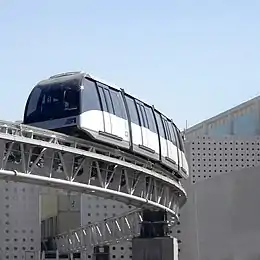
The distance between the two terminals is 3 kilometres (1.9 mi). A bus shuttle service named "inter-terminal transportation" facilitates seamless transit between Terminal 1 and Terminal 2. Bus stops are conveniently positioned at entrance 6 of Terminal 1 and entrance 4 of Terminal 2.[44]
Passengers holding a boarding pass, as well as technical and cabin crew, have the option to utilize the Aerotrén monorail system. Operating at a speed of 45 kilometres per hour (28 mph), the Aerotrén has a daily passenger capacity of 7,800.
Terminal 3 (proposed)
The intended construction of Terminal 3 faced cancellation amid the global COVID-19 pandemic in 2020. The recovery of flight numbers to 2019 levels is anticipated to take several years. Furthermore, the opening of the Felipe Ángeles Airport in Mexico State in 2022 may pose challenges for the Mexico City Airport in achieving pre-pandemic levels.[7]
Airlines and destinations
The airport connects 50 domestic and 64 international destinations in Latin America, North America, Europe and Asia. Aeromexico serves the largest number of cities from any Latin American hub (80), 46 domestic and 34 international.[45] It also operates the most departures and most destinations from the airport followed by Volaris. The most prominent foreign airlines are United Airlines, American Airlines, Delta Air Lines and Avianca Holdings. Aeroméxico/Aeroméxico Connect
Passenger
Notes^1 Turkish Airlines' flight from Mexico City to Istanbul makes a stop in Cancún; however, the airline does not have local traffic rights between Mexico City and Cancún.
Other services
In addition to the scheduled airlines above, Mexico City Airport is used by some further airlines for chartered flights, including:
Cargo
As of January 2022, Mexico City airport was served by 20 cargo airlines flying directly to Europe, Central, North and South America, Middle East, Africa and East Asia. The following airlines operate the scheduled destinations below.
Airlines providing on-demand cargo services
Destination maps
 Mexico City Domestic destinations from Mexico City International Airport Red = Year-round destination Blue = Future destination Green = Seasonal destination |
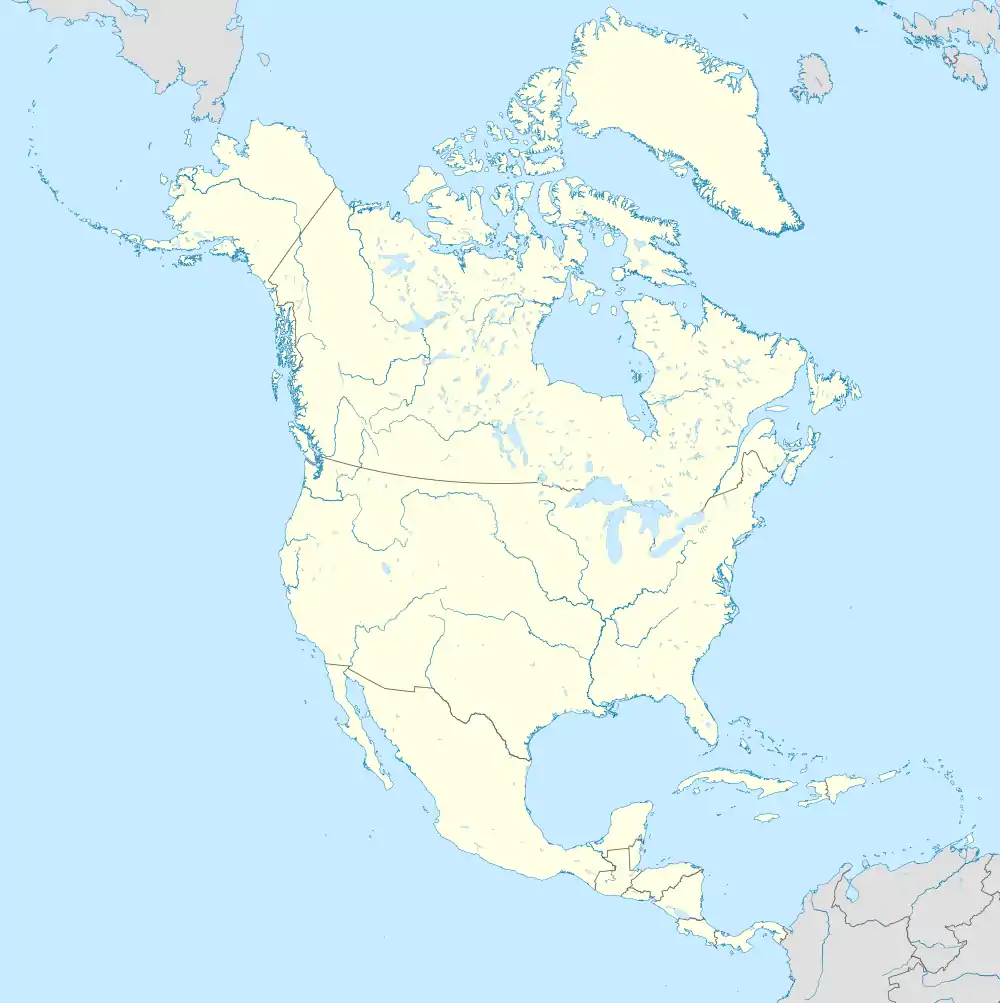 North American, Central American and Caribbean destinations from Mexico City International Airport Red = Year-round destination Blue = Future destination Green = Seasonal destination |
South American destinations from Mexico City International Airport Red = Year-round destination Blue = Future destination Green = Seasonal destination |
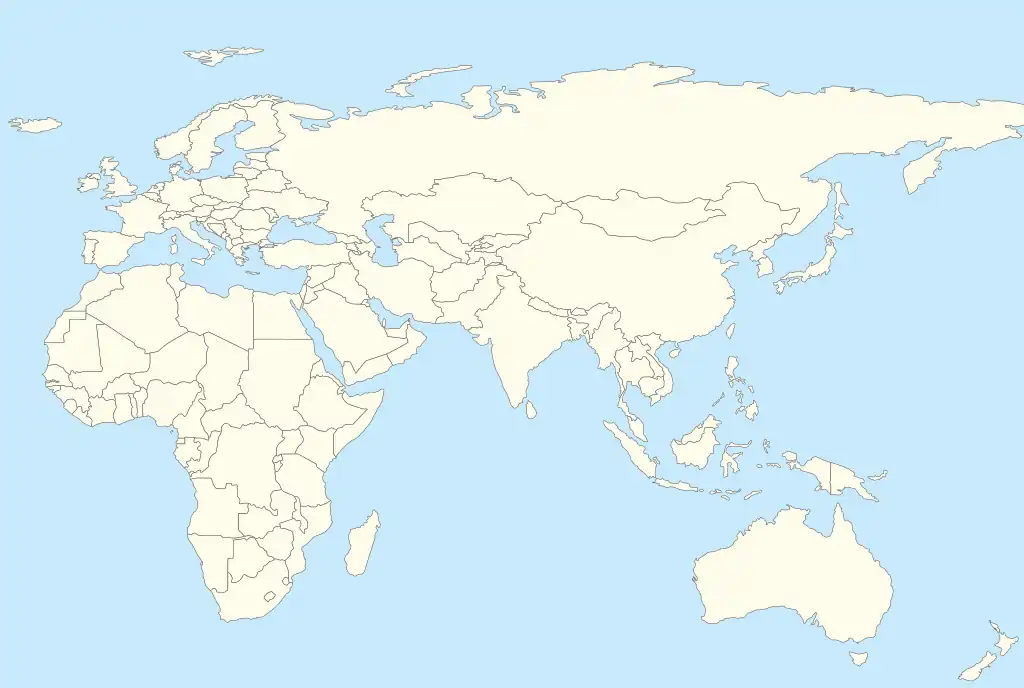 European and Asian destinations from Mexico City International Airport Red = Year-round destination Blue = Future destination Green = Seasonal destination |
Statistics
In 2022, Mexico City International Airport moved 46,258,521 passengers, making it the busiest airport in Latin America in terms of total passengers. It registered a year-to-year increase of 28.3%.[3]
In terms of international passengers, it is the second busiest airport in Latin America, with 14,563,933 passengers after Cancún Airport.[3]
In 2020, the airport was the busiest in Latin America by aircraft movements with 24% more operations than Bogotá-El Dorado[56] and 44.65% more than São Paulo-Guarulhos.[57] It is the 17th busiest airport in the world in terms of aircraft movements, climbing 4 spots compared to the previous year.[58] In 2020, the airport handled 215,144 aircraft operations, an average of 589 operations per day.[3]
Regarding cargo, the airport is also the busiest in the country and the second busiest in Latin America, after El Dorado International Airport[56] in Bogotá. It is also the 50th busiest in the world.[59] During 2021, it moved 567,779.1 tons, an annual increase of 18.40%.[3]
In terms of the impact of the airport to the economy of Mexico City, the airport sustains 35,000 jobs directly plus 15,000 indirectly in the immediate area.[60]
|
|
| Year | Domestic | % change | International | % change | Total | % change |
|---|---|---|---|---|---|---|
| 2022 | 87,101.2 | 483,707.8 | 570,809.0 | |||
| 2021 | 95,377.9 | 472,401.2 | 567,779.1 | |||
| 2020 | 79,536.3 | 390,178.0 | 469,714.3 | |||
| 2019 | 104,832.5 | 451,309.8 | 556,142.3 | |||
| 2018 | 101,774.72 | 479,900.56 | 581,675.28 | |||
| 2017 | 99,303.94 | 437,958.75 | 537,262.69 | |||
| 2016 | 91,820.00 | 391,613.40 | 483,433.40 | |||
| 2015 | 82,100.42 | 364,814.69 | 446,915.11 | |||
| 2014 | 67,341.85 | 331,214.62 | 398,556.47 | |||
| 2013 | 63,678.54 | 312,911.31 | 376,589.85 | |||
| 2012 | 78,666.10 | 318,351.98 | 397,018.08 | |||
| 2011 | 81,953.37 | 329,502.22 | 411,455.59 | |||
| 2010 | 84,846.88 | 308,228.992 | 393,075.87 | |||
| 2009 | 83,999.43 | 237,134.01 | 321,133.44 | |||
| 2008 | 97,070.08 | - | 279,025.63 | - | 376,095.71 | - |
Busiest routes
| Rank | Airport | Passengers | YoY % change | Ranking | Airline(s) |
|---|---|---|---|---|---|
| 1 | Cancún | 4,803,489 | Aeroméxico, Aeroméxico Connect, Magnicharters, Viva Aerobus, Volaris | ||
| 2 | Monterrey | 3,181,969 | Aeroméxico, Viva Aerobus, Volaris | ||
| 3 | Guadalajara | 2,916,413 | Aeroméxico, Viva Aerobus, Volaris | ||
| 4 | Tijuana | 2,519,260 | Aeroméxico, Viva Aerobus, Volaris | ||
| 5 | Mérida | 1,944,683 | Aeroméxico, Aeroméxico Connect, Magnicharters, Viva Aerobus, Volaris | ||
| 6 | Puerto Vallarta | 1,333,474 | Aeroméxico, Aeroméxico Connect, Magnicharters, Viva Aerobus, Volaris | ||
| 7 | San José del Cabo | 1,215,421 | Aeroméxico, Aeroméxico Connect, Magnicharters, Viva Aerobus, Volaris | ||
| 8 | Hermosillo | 952,031 | Aeroméxico, Aeroméxico Connect, Viva Aerobus, Volaris | ||
| 9 | Tuxtla Gutiérrez | 916,816 | Aeroméxico, Aeroméxico Connect, Viva Aerobus, Volaris | ||
| 10 | Ciudad Juárez | 885,397 | Aeroméxico, Aeroméxico Connect, Viva Aerobus, Volaris |
| Rank | Airport | Passengers | YoY % change | Ranking | Airline(s) |
|---|---|---|---|---|---|
| 1 | Bogotá, Colombia | 913,549 | Aeroméxico, Avianca, VivaAerobús, Volaris, Wingo | ||
| 2 | Madrid, Spain | 900,028 | Aeroméxico, Iberia | ||
| 3 | Houston – Intercontinental, USA | 879,133 | Aeroméxico, Aeroméxico Connect, United Airlines, VivaAerobús, Volaris | ||
| 4 | Los Angeles, USA | 847,757 | Aeroméxico, American Airlines, Delta Air Lines, VivaAerobús, Volaris | ||
| 5 | Miami, USA | 826,527 | Aeroméxico, American Airlines, Volaris | ||
| 6 | Chicago – O’Hare, USA | 633,846 | Aeroméxico, United Airlines, VivaAerobús, Volaris | ||
| 7 | Dallas/Fort Worth, USA | 609,148 | Aeroméxico Connect, American Airlines, VivaAerobús, Volaris | ||
| 8 | New York – JFK, USA | 590,591 | Aeroméxico, American Airlines, Delta Air Lines, VivaAerobús | ||
| 9 | Paris – Charles de Gaulle, France | 501,919 | Aeroméxico, Air France | ||
| 10 | Panama City – Tocumen, Panama | 479,343 | Copa Airlines |
Ground transportation
Metro and bus services
Terminal 1 is served by the Terminal Aérea Metro station, which belongs to Line 5 of the subway, running from Pantitlán station to Politécnico station. It is located just outside the national terminal. Also, trolley bus line 4 runs from the bus stop next to the Metro to Boulevard Puerto Aéreo station 1.7 km (1.1 mi) away, allowing transfer to Metro Line 1 (one can also take line 5 to Pantitlán and change to line 1, which is a geographical detour). Terminal 2 does not have any metro station near, but is a 700 m (2,300 ft) walk from Pantitlán, served by Metro lines 1, 5, 9, A, and numerous local buses.
Terminals 1 and 2 have two land terminals operating 24 hours a day, 365 days a year. Different bus lines operate from here,[63] and provide continuous transportation services to the main cities located around Mexico City, such as Córdoba, Cuernavaca, Pachuca, Puebla, Querétaro, Tlaxcala and Toluca.
Metrobús

In late 2010, former Head of Government of the Federal District Marcelo Ebrard announced a plan to build a new Metrobús Line 4 that would run from near Buenavista railway station in the west of the city towards Mexico City airport. Construction on Line 4 started on July 4, 2011. The plans for Line 4 included a two-step construction process with the first 28 km (17 mi) operational segment to be built between Colonia Buenavista and San Lázaro station. An extension provides travel between San Lázaro and the airport. The line opened on April 1, 2012 with two stations, Terminal 1 and Terminal 2.[64]
| Service | Destinations [departing from the airport] | Operator |
|---|---|---|
| San Lázaro, TAPO bus station, Historic Centre, Buenavista metro station, Buenavista railway station |
Authorized taxis
Taxis are in operation in Terminals 1 and 2 and there are two models of service: ordinary service in a sedan type vehicle for four passengers, and executive service in eight passenger vans. There are five taxi groups in operation. These are the only taxis authorized by the Ministry of Communications and Transport (SCT) of the Federal Government.
Long distance Buses
Terminals 1 and 2 have two ground terminals that operate 24 hours a day, 365 days a year. Various bus lines operate from here, providing continuous transportation services to cities near Mexico City.
Accidents and incidents
- On September 26, 1949, a Mexicana de Aviacion DC-3 crashed into the Popocatepetl volcano while approaching the airport with clouds and turbulence en route from Tapachula; all 23 on board, including actress Blanca Estela Pavon and senator Gabriel Ramos Millan, died.[65]
- On April 10, 1968, an Aerovías Rojas Douglas R4D-3 crashed on approach, killing all eighteen people on board. The aircraft was operating a domestic scheduled passenger flight, which was the airline's inaugural flight from Aguascalientes International Airport to Mexico City.[66]
- On October 31, 1979, Western Airlines Flight 2605 crash-landed. The crew of the DC-10 landed on a closed runway and hit construction vehicles on the runway. There were 73 fatalities (including one on the ground) and 16 survivors.[67][68]
- On December 12, 1981, a bomb exploded inside the passenger cabin of a parked Aeronica Boeing 727-100, tearing a hole into the fuselage. The captain, two flight attendants, and a groundworker were injured. They had been on board the aircraft for pre-departure checks for a scheduled passenger flight to San Salvador and onwards to Managua's Augusto C. Sandino International Airport.[69]
- An Aero California DC-9-15 overran a runway on July 21, 2004, during an intense storm at the airport. There were no victims, but the aircraft was scrapped. However, a woman died later due to a heart attack.[70]
- On November 4, 2008, a Mexican Interior Ministry LearJet 45 crashed on approach around 18:45 local time. On board was Mexican Secretary of the Interior Juan Camilo Mouriño, who was a top aide to President Felipe Calderón. Mouriño was in charge of the fight against the drug trade in Mexico. Also on board was José Luis Santiago Vasconcelos, former assistant attorney general and current head of the federal technical secretariat for implementing the recent constitutional reforms on criminal justice and public security. All eight on board died, along with eight others on the ground. 40 others on the ground were injured. The crash was attributed to pilot error.[71]
- On September 9, 2009, hijacked Aeroméxico Flight 576 landed at Mexico City International Airport from Cancún International Airport.[72]
- On September 13, 2009, a Lufthansa Cargo McDonnell-Douglas MD-11 was damaged in a heavy landing. Post landing inspection revealed that there were wrinkles in the fuselage skin and the nose gear was bent.[73] According to a Lufthansa spokesman, the aircraft would be repaired and returned into full service.[74]
See also
- List of the busiest airports in Mexico
- List of airports in Mexico
- List of airports by ICAO code: M
- List of busiest airports in North America
- List of the busiest airports in Latin America
- Transportation in Mexico
- Transport in Mexico City
- Tourism in Mexico
- List of Mexican military installations
- Mexican Air Force
- Valley of Mexico
- Greater Mexico City
- Mexico City Texcoco Airport
- Felipe Ángeles International Airport
References
- ↑ "Airport information for MMMX". World Aero Data. Archived from the original on March 5, 2019.
{{cite web}}: CS1 maint: unfit URL (link) Data current as of October 2006. Source: DAFIF. - ↑ Airport information for MEX at Great Circle Mapper. Source: DAFIF (effective October 2006).
- 1 2 3 4 5 6 "Statistics Mexico City airport" (PDF). Mexico City International Airport. January 2022. Retrieved January 15, 2022.
- ↑ Tomás Serebrisky. "Airport Economics in Latin America and the Caribbean". The World Bank. Retrieved January 30, 2022.
- ↑ "2022 Airport Traffic Report" (PDF). Port Authority of New York and New Jersey. April 2023. p. 32.
- ↑ Elizalde, Triunfo; Vargas, Rosa Elvira (October 5, 2006). "Decretará Fox que el AICM se denomine Benito Juárez" [President Vicente Fox decrees official name for Mexico City Airport]. La Jornada (in Spanish). Archived from the original on September 8, 2014.
- 1 2 Cantera, Sara (June 11, 2020). "IATA respalda cancelación de la Terminal 3 y suspensión de adquisición del Aeropuerto de Toluca". El Universal (México).
- ↑ "Airport Runway Counts & Traffic Stats".
- ↑ "Mexican-americans in aviation online exhibition". San Diego Air & Space Museum. Archived from the original on August 7, 2014. Retrieved September 7, 2014.
- ↑ "Conquistador of the Sky: A History of Aviation in Latin America". Project MUSE. Archived from the original on December 22, 2015. Retrieved September 7, 2014.
- ↑ "Mexico's 100 years of flying taking off to new heights!". The Catalist. Archived from the original on November 20, 2014. Retrieved September 7, 2014.
- ↑ "A brief Mexican History aviation". Mexconnect. Retrieved September 7, 2014.
- ↑ "One more year of Mexico City International Airport (In Spanish)". Contenido. Archived from the original on September 7, 2014. Retrieved September 7, 2014.
- ↑ ""Breve Historia del Aeropuerto Internacional de la Ciudad de México", Mexico City International Airport" (PDF). Archived from the original (PDF) on September 6, 2014. Retrieved September 6, 2014.
- 1 2 "Historia de la aviación en México (in Spanish)". Colegio de Pilotos de México. Archived from the original on February 22, 2016. Retrieved January 26, 2016.
- ↑ Obras. 1993. Retrieved June 4, 2015.
- ↑ "A New Airport for Mexico City?". MexDFmagazine. Archived from the original on June 5, 2015. Retrieved June 4, 2015.
- ↑ Historic photo at FlyAPM site
- ↑ P, Fernando Rosique; Ozorno, Oscar Esquinca (May 25, 2013). "Sistema Aeroportuario de la Ciudad de México (in Spanish)". Esquinca, Rosique. Retrieved February 3, 2016.
- ↑ "DECRETO que establece el cierre del Aeropuerto Internacional de la Ciudad de México Benito Juárez (in Spanish)". Diario Oficial de la Federación. January 13, 1994. Retrieved February 3, 2016.
- ↑ "Iniciaría en febrero la ampliación del AICM (in Spanish)". El Universal. January 3, 2000. Archived from the original on February 3, 2016. Retrieved February 3, 2016.
- ↑ Thompson, Ginger (August 3, 2002). "Mexico drops planned airport after protests from peasants". The New York Times. Retrieved September 7, 2014.
- ↑ "Mexico City inaugurates new airport terminal". USA Today. Retrieved September 7, 2014.
- ↑ "DECLARATORIA de saturación en el campo aéreo del Aeropuerto Internacional de la Ciudad de México". DOF - Diario Oficial de la Federación. Diario Oficial de la Federación. September 29, 2014. Retrieved January 26, 2016.
- ↑ "New Mexico City International Airport". CAPA Centre for Aviation. Archived from the original on September 6, 2014.
- ↑ Gomez, Veronica; Stargardter, Gabriel (September 4, 2014). "UPDATE 1-Mexico eyes foreign builder, local partners for $9 bln airport". Reuters. Archived from the original on September 5, 2014.
- ↑ Uphoff, Rainer (September 4, 2014). "Mexico to open new mega airport in 2018". Flightglobal. Madrid. Archived from the original on September 5, 2014.
- ↑ "Ready for landing: Mexico City airport expansion could make it one of largest in world", Christian Science Monitor, 2014-09-03
- ↑ Luhnow, David (September 2, 2014). "Mexico Plans New $9.2 Billion Airport". The Wall Street Journal. (subscription required)
- ↑ Alissa Walker (September 3, 2014). "Mexico City's New Mega-Airport Will Collect Its Own Energy and Water". Gizmodo. Retrieved June 4, 2015.
- ↑ "Close". Archived from the original on October 31, 2018.
- ↑ Nensel, Mark (December 12, 2018). "IATA: Cancellation of Mexico airport construction to cost over $5 billion". Air Transport World. Archived from the original on January 10, 2019. Retrieved January 12, 2019.
- ↑ "RESOLUCIÓN por la que se declara la saturación de los edificios terminales del Aeropuerto Internacional Benito Juárez de la Ciudad de México". DOF - Diario Oficial de la Federación. Diario Oficial de la Federación. March 3, 2022. Retrieved January 16, 2023.
- ↑ "Mexican Airlines Agree With Government To Move Cargo Operations In Mexico City".
- ↑ "Uprooted cargo airlines relocate to secondary airport near Mexico City".
- ↑ "Unplanned airport planning in Mexico City". Academia Education. Archived from the original on September 8, 2014. Retrieved September 8, 2014.
- ↑ "Disgruntled neighbours by noise pollution in Mexico City". Quadratin. Archived from the original on September 8, 2014. Retrieved September 8, 2014.
- ↑ "ASA's address". Aeropuertos y Servicios Auxiliares. Retrieved September 6, 2014.
- ↑ Retrieved on December 20, 2011. "Av.602 No.161 Col.Zona Federal Aeropuerto Internacional Ciudad de México Delegación Venustiano Carranza, C.P.15620, México D.F."
- ↑ "Estrenan Base Aérea Militar con regreso del Avión Presidencial". Excélsior (in Spanish). July 22, 2020. Retrieved July 23, 2020.
- ↑ "Bases Aéreas. Secretaría de la Defensa Nacional".
- ↑ "Aeromexico Outlines Split Terminal Operations at Mexico City". October 30, 2021.
- ↑ "Entra en operaciones el Dedo "L" de la T2 del AICM".
- ↑ "Terminals Mexico City Benito Juarez Airport". mexico-airport.com.
- ↑ Aeromexico. "Aeromexico, The Airline Serving The Largest Number Of Cities From A Hub In Latin America". www.prnewswire.com (Press release).
- 1 2 3 "Aeromexico 2024 US Network Expansion Update – 29OCT23". Aeroroutes. October 2023. Retrieved October 31, 2023.
- ↑ "AEROMEXICO TENTATIVELY MOVES SEOUL SERVICE RESUMPTION TO AUGUST 2024". Aeroroutes.com. October 2023. Retrieved November 5, 2023.
- ↑ "Aeroméxico makes adjustments to its international itineraries for the winter". Transponder1200 (in Spanish). July 2023. Retrieved July 11, 2023.
- ↑ "Aeromexico Adds Raleigh-Durham Services". Airline Geeks. November 2023. Retrieved November 13, 2023.
- ↑ "Aeroméxico announces flights to the new Tulum airport". EnElAire (in Spanish). August 2023. Retrieved August 25, 2023.
- ↑ "Viva Aerobus announces new routes to Tulum". EnElAire (in Spanish). August 2023. Retrieved August 25, 2023.
- ↑ "Aeroméxico inaugurates cargo route between Mexico and Wuhan, China" (in Spanish). May 2021. Retrieved May 10, 2021.
- ↑ "New all cargo air route links China's Zhejiang, Mexico". Xinhua. October 30, 2023. Retrieved October 30, 2023.
- ↑ "Mexican Carrier MasAir Begins Flying Directly to China". June 4, 2022.
- ↑ Noëth, Bart (May 31, 2021). "Ostend-Bruges Airport officially added to Qatar Airways Cargo Network". Aviation24.be. Retrieved September 19, 2021.
- 1 2 "Bogota airport statistics". Bogota International Airport. Archived from the original on October 27, 2015. Retrieved February 3, 2016.
- ↑ "Guarulhos Airport Statistics (in Portuguese)". Guarulhos International Airport. Retrieved January 12, 2017.
- ↑ "ACI reveals top 20 airports for passenger traffic, cargo, and aircraft movements". Airports Council International. May 19, 2020. Retrieved December 29, 2020.
- ↑ 2019 Annual Airport Traffic Report (PDF). United States: Port Authority of New York and New Jersey. 2020.
- ↑ "Benito Juárez International airport - Economic and social impacts". Ecquants. Archived from the original on October 31, 2014. Retrieved September 7, 2013.
- ↑ "Statistics Mexico City Airport". Mexico City International Airport. Retrieved January 12, 2021.
- 1 2 "Estadística operacional por origen-destino / Traffic Statistics by City Pairs" (in Spanish). Agencia Federal de Aviación Civil. January 2023. Retrieved January 26, 2023.
- ↑ "Buses". Aeropuerto Internacional de la Ciudad de México. September 11, 2013. Archived from the original on May 19, 2022.
- ↑ "Metrobus". Mexico City International Airport. September 11, 2013. Retrieved May 28, 2020.
- ↑ "Blanca Estela Pavón y el campesino que informó su muerte a orillas del Popo". August 24, 2017.
- ↑ "XA-GEV Accident description". Aviation Safety Network. Archived from the original on November 23, 2011. Retrieved July 24, 2011.
- ↑ "WA2605 Accident description". Aviation Safety Network. Retrieved September 4, 2014.
- ↑ "Flight WA2605 crash photo". Air Disaster. Archived from the original on October 21, 2014. Retrieved September 4, 2014.
{{cite web}}: CS1 maint: unfit URL (link) - ↑ "Commercial airline bombing history". Aerospaceweb. Retrieved September 6, 2014.
- ↑ "XA-BCS Accident description (in Spanish)". La Jornada. Retrieved September 4, 2014.
- ↑ "Plane crash kills Mexico's deputy leader". Time. Retrieved September 4, 2014.
- ↑ "Bolivian man acted alone in Mexico hijacking". CNN. Archived from the original on March 28, 2014. Retrieved September 4, 2014.
- ↑ "Accident: Lufthansa Cargo MD11 at Mexico City on Sep 13th 2009, hard landing". The Aviation Herald. Retrieved October 11, 2009.
- ↑ "Lufthansa Cargo wird D-ALCO in Stand setzen". aero.de/Aviation Media & IT (in German). October 16, 2009. Retrieved October 24, 2009.
External links
 Media related to Mexico City International Airport at Wikimedia Commons
Media related to Mexico City International Airport at Wikimedia Commons- Official Website
- Aeronautical chart and airport information for MMMX at SkyVector
- Current weather for MMMX at NOAA/NWS
- Mexico City International Airport information at Great Circle Mapper
- Accident history for MEX at Aviation Safety Network
- Aeropuertos y Servicios Auxiliares (in Spanish)
- Independent information about Mexico City Airport
- Informational Guide to MEX - Non Official
- Mexico city airport Non Official website
- Aeromexico travel Information - Mexico City International Airport
